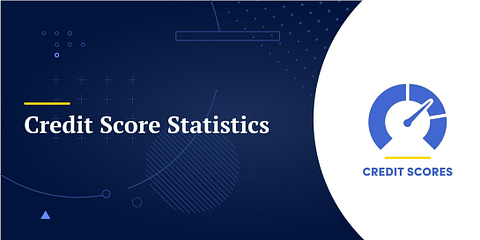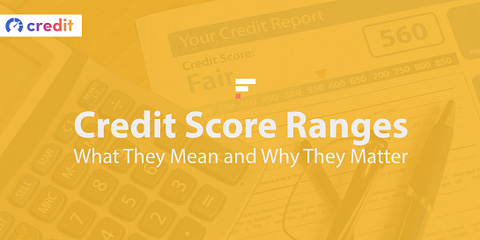In 2022, the average credit score in the US, determined by the FICO scoring model, stood at 714, which is classified as ‘good’ by FICO[1]✓
✓ Trusted source
Experian
Experian is a consumer credit reporting company that collects and aggregates information on 235 million individual U.S. consumers and more than 25 million U.S. businesses..
Intrigued by demographic trends, we delved into data to examine how average credit scores vary across age, race, and state.
Credit Score Distribution
FICO® Scores range from 300 to 850 and they are grouped into six categories:
- Very poor: 300-579
- Poor: 580-669
- Fair: 601-660
- Good: 670-739
- Very good: 740-799
- Exceptional: 800-850
Most Americans’ credit scores fall into the ‘Good’ and ‘Very Good’ categories. Over 46% of Americans have a credit score of 750 or higher, while only around 15% have a credit score below 600[2]✓
✓ Trusted source
FICO
FICO originally Fair, Isaac and Company, is a data analytics company focused on credit scoring services..
FICO® score distribution in the US
Credit Scores By Year
The average American credit score has been on the rise over the past decade, with the biggest increase happening from 2019 to 2021. In this three-year period, the average credit score increased by 12 points. Despite the pandemic, most Americans have managed to keep their credit scores in good standing. Federal relief programs, like stimulus checks and student loan payment freeze, have played a key role as well.
| Year | Avg. Credit Score |
|---|---|
| 2022 | 714 |
| 2021 | 714 |
| 2020 | 710 |
| 2019 | 702 |
| 2018 | 701 |
| 2017 | 699 |
| 2016 | 699 |
| 2015 | 695 |
| 2014 | 693 |
| 2013 | 691 |
| 2012 | 693 |
| 2011 | 689 |
Credit Scores By Age
Data from Experian, one of the three major credit reporting agencies, shows that average credit scores tend to increase with age. This is not surprising since older people have greater incomes, more credit history, and far more experience in managing credit.
Here’s a summary of the conclusions drawn from the data:
- Generation Z (18-24) has the lowest average credit score of 679, indicating that younger individuals are typically still building their credit histories.
- Millennials (25-40) show a slight improvement in their average credit score at 687, as they gain more experience managing credit and establishing a longer credit history.
- Generation X (41-56) has an average credit score of 706, reflecting a stronger credit profile due to long credit histories and better credit management as they age.
- Baby boomers (57-75) display a higher average credit score of 742, suggesting that they have well-established credit histories and have demonstrated responsible credit behavior over time.
- The Silent Generation (76+) has the highest average credit score of 760, indicating that older individuals have the most experience managing credit and have maintained a good credit standing throughout their lives.
| Age | Average Credit Score |
|---|---|
| Generation Z (18-24) | 679 |
| Millennials (25-40) | 687 |
| Generation X (41-56) | 706 |
| Baby boomers (57-75) | 742 |
| Silent Generation (76+) | 760 |
Credit Scores By Race
In 2021, the highest average score was recorded by White communities with 727, followed by Hispanic communities with 667, and Black communities with 627.
Native American communities recorded the lowest average score with a 612 average.
| Race | Average Credit Score |
|---|---|
| White | 727 |
| Hispanic | 667 |
| Black | 627 |
| Native American | 612 |
Average Credit Score By State
The state with the highest average credit score is Minnesota (742).
The state with the lowest credit score is Mississippi (680).
Although the credit scores have been rising in all states, that rise has been slowest in the Southern states. Midwestern states on the other hand have maintained the highest scores.
| State | Average Credit Score |
|---|---|
| Alabama | 691 |
| Alaska | 723 |
| Arizona | 712 |
| Arkansas | 694 |
| California | 721 |
| Colorado | 730 |
| Connecticut | 725 |
| Delaware | 714 |
| District of Columbia | 716 |
| Florida | 707 |
| Georgia | 694 |
| Hawaii | 732 |
| Idaho | 727 |
| Illinois | 719 |
| Indiana | 712 |
| Iowa | 729 |
| Kansas | 721 |
| Kentucky | 702 |
| Louisiana | 689 |
| Maine | 728 |
| Maryland | 716 |
| Massachusetts | 732 |
| Michigan | 718 |
| Minnesota | 742 |
| Mississippi | 680 |
| Missouri | 712 |
| Montana | 731 |
| Nebraska | 731 |
| Nevada | 702 |
| New Hampshire | 734 |
| New Jersey | 724 |
| New Mexico | 699 |
| New York | 721 |
| North Carolina | 707 |
| North Dakota | 733 |
| Ohio | 715 |
| Oklahoma | 693 |
| Oregon | 732 |
| Pennsylvania | 723 |
| Rhode Island | 723 |
| South Carolina | 696 |
| South Dakota | 734 |
| Tennessee | 702 |
| Texas | 693 |
| Utah | 730 |
| Vermont | 736 |
| Virginia | 721 |
| Washington | 735 |
| West Virginia | 700 |
| Wisconsin | 735 |
| Wyoming | 723 |
American credit scores have held up even under stress from inflation and a generally declining economy. There are still some signs of stress.
Recent data from FICO indicate that average credit utilization is up from 29.6% to 31%, indicating higher balances. Young people in particular seem to be under stress. from 2010 to 2021, 33% of 18-to-29-year-olds in majority Black communities, 26% in majority Hispanic communities, and 21% in majority white communities saw their credit scores decline.
























